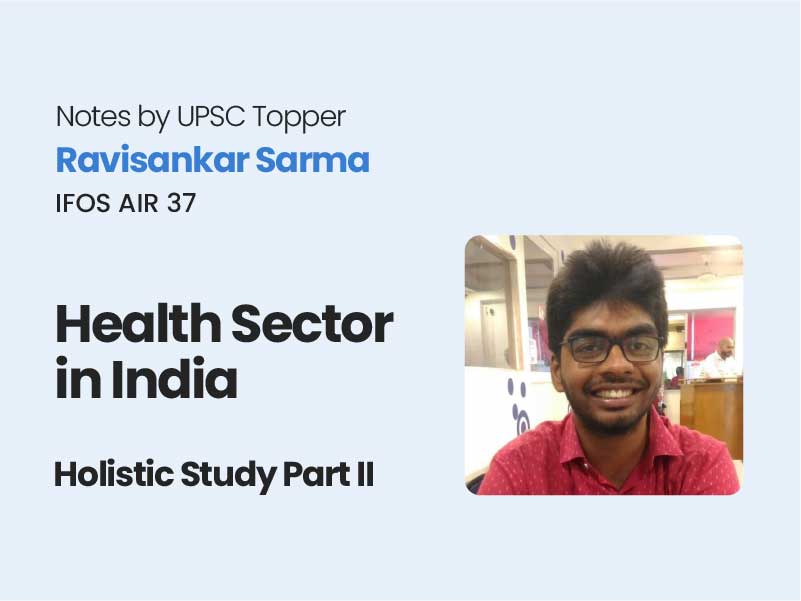Companion@360 → 7 Month programme to sharpen your writing skills → REGISTER NOW

Evaluation
RSBY has been largely unsuccessful in reaching its coverage targets or reducing OoPE significantly among the poor.
- Poor Targeting: Half of those enrolled in RSBY belong to the non-poor category
- Low Utilisation: Although coverage was substantial, the hospitalization cases that ended up using RSBY was limited
- Low Impact on OoPE: Payment requirements for drugs, diagnostic, inpatient and transport services have hindered the reduction of expenditure as envisaged by RSBY.
- Regional Disparity: RSBY performs better in states such as Kerala that have a robust healthcare delivery system
- Ineffective Regulation and Monitoring: RSBY has been manipulated by private health centres and insurance companies to exploit the patients through unethical practices and false diagnosis.
National Health Protection Scheme
Launched in the 2018 budget, the NHPS has greatly enhanced its coverage to 10 crore families for 1Lakh insurance amount. It is targeted at reducing out of pocket expenditure of vulnerable sections of society. According to world bank, 62.4% of total health expenditure in the country was out of pocket as of 2014.
Features of the Scheme
- Funding: NHPS is a centrally sponsored scheme where funds are shared between centre and state. The NHPS is also backed by the revenue generating power of 1% cess.
- High insurance amount: While the RSBY suffered from a lowly insurance fixed at 30k, the NHPS has stepped up the insurance covered for hospitalization to 1 Lakh.
- Greater Coverage: The NHPS aims to cover 40-50 crore individuals in vulnerable sections of the population and is thus mandated as the largest healthcare scheme in the world
Issues in the NHPS
- Centralized Scheme: The NHPS is introduced as a centrally sponsored scheme but the role, consent or the fiscal capability of the states are not clearly elicited or evaluated by the centre
- Ignorance of Primary Healthcare: The NHPS is an addition to the many insurance schemes that focus solely on secondary and tertiary health care expenses. The poorest in India continued to be plagued by diseases that need treatment at the primary level.
- Privatization of Healthcare: NHPS creates an insurance-driven culture of healthcare that may lead to private sector domination in the healthcare system. This entails concerns of regional disparity, commercialization of healthcare and neglected diseases and sections
- High Fiscal Burden: NHPS is the largest health insurance scheme in the world. Providing insurance for 50 lakh people poses a huge financial challenge to the state given its FRBM commitments
Way Forward
- Primary Health Insurance: India should emulate the examples of Thailand (30 Baht scheme) and Indonesia (social health insurance) in strengthening its primary health care system for achieving universal coverage
- Basic Health Infrastructure: The health insurance schemes can realize their benefits only when backed by adequate infrastructure as illustrated by the success of RSBY in Kerala. The public expenditure needs to be increased by at least 2% of the GDP.
- Careful Design and Regulation of Private Sector: The insurance company-private healthcare nexus need to be avoided by the state. An independent regulator can be put in place for the same
- Customized Model: Health being a state subject and each state having different set of problems, a one-size fits all policy is unwanted. A customized model of NHPS can be introduced to protect federal interests
Conclusion
NHPS is an illustration of the government’s commitment towards Health for All. However, such an ambitious initiative needs to be state led and state owned with participation across governments and healthcare systems to achieve convergence with the SDG of achieving universal health coverage.
Challenges of Ayushman Bharat Initiative
- Fiscal Burden: Government would need to significantly raise its expenditure on health to at least 4% of the GDP to ensure the implementation of the programme
- Lack of HR expertise: According to the MoHFW’s manpower statistics, there is a shortage of more than 8000 doctor vacancies in primary sector. Unless these equations are corrected, India’s dream of 1.5 lakh health and wellness centres would remain futile
- Infrastructure Shortage: Indian hospitals may not be able to accommodate the rising demands of health care on the back of the Ayushman Health programme. The bed to population ratio needs to be raised to 1.7 per 1000 from 0.9 according to FICCI-EY report
- Cooperative Federalism: The states need to contribute 40% of the funds as per the programme and Health is a state subject. Great synergy is required to be developed between existing state health insurance schemes and RSBY to NHPS
Read All Notes by Ravisankar Sarma
